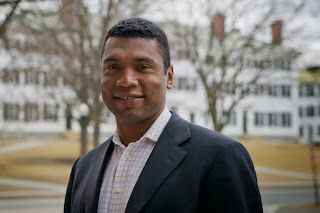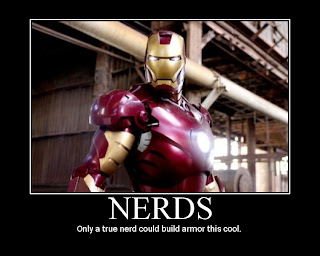Check out the latest installment
All Posts (6505)
Marie Antoinette never said it, but cake nonetheless, its stratification, its 99% base and crowning glory of 1% sugar and lard personification of our inequitable "education" system:
Is American Culture to Blame for Failing Schools? NY Times Mobile
By DAVID FIRESTONE
December 18, 2013
“Americans do not support an egalitarian society.”
That was the response of one reader, Jay David of New Mexico, to the final editorial in our series on science and math education, and in many ways it summed up the bitterness that many others expressed when the American school system was compared to those of other countries.
The editorial looked at some of the reasons students in Finland, Canada and Shanghai do much better in science and math than American students, and concluded that those places care more about preparing teachers and elevating the cultural position of education, while ensuring that more resources go to the neediest schools. In this country, teachers are poorly paid, poorly prepared and generally disdained, while the richest schools and students get by far the most money.
Scores of readers blamed that disparity on this country’s more libertarian culture, and on an outlook toward learning that if not overtly anti-intellectual is at least non-intellectual.
“Canadians’ acceptance and indeed pride in their more egalitarian society contrast with Americans’ acceptance of having an underclass,” wrote Blair P., of Palm Desert, Calif. “It’s an Ayn Rand philosophy.”
We are allowing sociopaths to abuse our intellect and common sense; we're dumbing down our curriculum to fit a dogma best left in constitutionally separated voluntary places of worship for Sunday school lessons:
This lunacy is confirmed on Snopes (its made its rounds on the web); what we do to ourselves is child abuse and cultural psychopathy. Our elected officials encourage this for the electorate to vote for them against their own interests. WHAT OTHER COUNTRY ON THE PLANET DOES THIS TO THEMSELVES?
We are non-intellectual. We attack nerds-cum-intellectuals-cum-engineers-cum-teachers-cum-professors and expect to advance as a nation. We celebrate replaceable athletes and "reality shows'" family dysfunction exacerbating a writ large dysfunction of a democratic republic originally designed for its citizens to be educated, involved, curious; questioning. CRITICAL THINKING skills, not magical thinking is what our competitors excel in:
America’s stature as an economic power is being threatened by societies above us and below us on the achievement scale. Wealthy nations with high-performing schools are consolidating their advantages and working hard to improve. At the same time, less-wealthy countries like Chile, Brazil, Indonesia and Peru, have made what the O.E.C.D. describes as “impressive gains catching up from very low levels of performance.” In other words, if things remain as they are, countries that lag behind us will one day overtake us.
The United States can either learn from its competitors abroad — and finally summon the will to make necessary policy changes — or fall further and further behind.
The link for the 2nd excerpt is below. We're headed for the "Hunger Games."
NY Times: Three Reasons Students Do Better Overseas
I have created a short six minute video featuring the Alien Ambassador aka Nathan Turner. This is the beginning of my effort to raise last minute funds to complete my movie which will be released in the summer of 2014. I wanted everyone to see that we can have a black superhero on the TV, internet and big screens. I have the actors, screenplay, location sets, but what I need is last minute funds to put everything together. We as black people have been complaining about the lack of black characters in comic books and movies for a long time. Nothing is going to change unless WE do something about it. I'm not producing a blockbuster Hollywood event like The Amazing Spiderman, Man of Steel or the The Dark Knight. What I'm doing is producing a good sci-fi movie for 90 minutes that features a black superhero. I got a bunch of nerds to help me with editing and special effects because we want to see that a black man and woman can save the day like any one else. All I'm looking to raise is at least $500.00 dollars. It's relatively small amount of money compared to other budgets. I have put in my own money and time so you don't have too. I can use additional funds to carry me over to the finish line. Tell others about my project. Watch the short video and pass it along to see what my vision is. See if my project is worth helping. My project is on kickstarter.com at THIS ADDRESS. I have some cool reward prizes, but 5 bucks and can start it off.
Enjoy the short video and help me put a black superhero on the screen this summer.
Thank you
...and why it's important to our democracy.
As we get closer, I'll post more...you can COUNT on it!
FROM: ANALOG SCIENCE FICTION AND FACT
REVIEW: Mothership: Tales From Afrofuturism and Beyond
BY: DON SAKERS
This article was originally published in Analog Science Fiction and Fact
Edited by Bill Campbell & Edward Austin Hall
Rosarium Publishing, 350 pages, $19.95 (trade paperback)
ISBN: 978-0-9891411-4-7
Genre: Original Anthology
Mothership is billed as presenting “just a part of the changing face of speculative fiction,” and features thirty-nine stories by forty writers of color. Some are familiar names (Tobias Buckell, S.P. Somtow), while others are up-and-comers.
As you might expect from the term “speculative fiction,” not all of these stories are science fiction—there’s fantasy, steampunk, and horror as well. And despite the term “Afrofuturism,” these stories aren’t limited to the concerns of Africa or African-Americans. Frankly, what we have here is simply an anthology of good stories.
Market realities dictate that it’s not enough to have good stories by relatively unfamiliar writers—there has to be a gimmick. In this case, readers need to look past the gimmick at the stories themselves.
Mothership’s keyword is “diversity.” If these stories share anything, it’s that they spring more from the tradition of literary SF than from the Campbell era. To put it in magazine terms, you’d see most of these stories in Asimov’s or Fantasy & Science Fiction before you’d see them in Analog. Not surprising, really—the editors come from academia. Don’t let that deter you.
Among the standouts in this volume are Thaddeus Howze’s “Bludgeon,” a Twilight Zone-ish tale of alien invasion with a surprise ending; Carlos Hernandez’s “The Aphotic Ghost,” in which a father comes to terms with his talented son’s death on Mount Everest; and Nisi Shawl’s “Good Boy,” a parable of virtual reality.
If there’s anything missing from this volume, it’s background on the contributors. Yes, one can always turn to the Internet—but I kept wishing there was an “about the authors” section.
For readers who want to see more diversity in SF, Mothership is definitely worth the price.
Open Letter to Animal Planet and the Discovery Channel
To Whom It May Concern:
Even though it's an old story, I see you chose to run your faux documentary on Mermaids, replete with interviews from faux oceanographic scientists, faux CGI representations of evolved-from-Africa mermaid-hominids with a fake "discovery" by children at a beach, and the ubiquitous claims of a "government cover-up." The NOAA made an official statement on its web site the last time this was attempted. The off-hand scripted involvement of children got my attention.
Here is a video of a whale sighting I participated in last summer:
Yes, it's amateurish and not shot with CGI as your hominid tribe of mer-men. The jiggles are from my breathless sprinting back and forth to each side of the boat with my mobile phone where the sightings happened. I'm quoting my You Tube page for this blog:
"Sighting 1 of 2 Finback whales, a Minke and an Ocean Sunfish (Mola mola). More videos to follow of 2nd and rest of sightings. All in all, a good day!"
That was FOUR non-mythologized sea creatures. There was no need for fake effects for the thrill of adventure. It was a good day, and a good time enjoyed by all, young and old and a diversity representing many countries that launched into the deep from Nantucket. I assure you, if a mermaid had been sighted off the bow, stern, port or starboard of our boat, there would have been even more excitement, and a lot of interviews by major networks like yourselves.
On other channels, we get schlock, crap, faux news and faux "reality shows," and as a nation we're rapidly losing our grip on critical thinking skills, healthy skepticism, scientific reasoning and the thrill of adventure for young people to seriously think about exploring a career in the sciences. In my opinion, we're just making our young people "good consumers" and not good thinkers or producers. Other nations are not doing this to themselves.
TLC: it stands for "The Learning Channel," yet hosts "Honey-Boo-Boo," and its current lineup is not too far removed. The competition for viewership in the universe of hundreds of options for consumers must be fierce, and I appreciate the struggle for viewership in a sea of options. However, we will not be a functional democracy for much longer if the only thing you can produce does not inform the citizenry, but instead dumbs down our most vulnerable via manipulation - of the very young and the very old - propagates "magical thinking" and its hand-in-hand cousin conspiracy theories.
I grew up watching Mr. Wizard (Bill Nye in the 90's thankfully carried on this tradition); the Apollo Moon Landing; Marlin Perkins' "Wild Kingdom"; "The Undersea World of Jacques Cousteau" and as a young adult in college, Carl Sagan's "Cosmos." THESE shows of actual events ignited the thrill of discovery in me, as I spent many a Saturday hunched around test tubes, testing electrical circuits, viewing human hairs and amoeba or peering through a refractor telescope. With respect to Cosmos, it spurred me to complete an undergraduate degree in Engineering Physics; it thrills me to go further. Surely your discourse could rise to this level, and elevate rather than insult the intelligence of and debase our nation's youth.
What you practice in these faux schlock-umentaries is frankly on the level of national child abuse. As a former high school math and physics teacher, I formally protest your actions, and ask you to reconsider broadcasting this pseudoscience ever again. I usually reserve these types of posts for Sunday, but it is a new school year, and impressionable minds should be guided in the correct way to view science: as an attempt to get at deeper truths; not propagate fiction.
Both official retractions and apologies are in order if you are mature enough to make them.
For branding yourselves under the name "Discovery Channel," ratings should not be your only criteria. Thank you.
 One of the goals of Moorsgate Media is to provide tools for content creators. In addition to blogging and writing about interesting sci-fi topics, we strive to develop simple apps and programs that hopefully help creators and dreamers to get their ideas down in a concise, readable form.
One of the goals of Moorsgate Media is to provide tools for content creators. In addition to blogging and writing about interesting sci-fi topics, we strive to develop simple apps and programs that hopefully help creators and dreamers to get their ideas down in a concise, readable form. To that end, today we released a small Text Analysis WebApp called Kaizen (found here Kaizen Text App). The App can also be found at the top of our blog banner. It is a client based JavaScript program, so it should work on most desktops and advanced feature portables. The App is a straight forward readability / grade level analysis tool using the FOG Index as a base. Additionally, we have included word complexity / uniqueness metrics, to help you identify if you are overusing (or under using) your dictionary.
The Kaizen Text App is a part of a larger Kaizen Scripter Program we are developing that incorporates the Kaizen Text technology and provides a more full featured word processor and text analysis tool. Hopefully, people find it useful and provide feedback if they don't.
Moorsgate Media (c)2014
 |
| Image: NASA/JPL and article link |
Exoplanets are almost old hat to astronomers, who by now have found more than 1,000 such worlds beyond the solar system. The next frontier is exomoons—moons orbiting alien planets—which are much smaller, fainter and harder to find. Now astronomers say they may have found an oddball system of a planet and a moon floating free in the galaxy rather than orbiting a star.
The system showed up in a study using micro lensing, which looks for the bending of starlight due to the gravitational pull of an unseen object between a star and Earth. In this case the massive object might well be a planet and a moon. But the signal is not very clear, the researchers acknowledge, and could instead represent a dim star and a lightweight planet. “An alternate star-plus-planet model fits the data almost as well” as the planet-plus-moon explanation, the scientists reported in a paper that was posted this week on the preprint site arXiv. The study has not yet been peer-reviewed.
The thrill is obvious, but tampered with skeptical caution: a moon discovered circling an exoplanet with the presence of comet-carried water in the planet's early stage could give rise to the conditions similar to ours for intelligent life. I expect peer-review will be necessarily rigorous as the Scientific Method is about illuminating truth from fiction; facts from error to corroborate this finding.
Scientific American: First Exomoon Possibly Glimpsed
It’s bath day.
My wrist itched from where my voidwatch had been part of my flesh. I rubbed it, missing the tech beneath my skin. Once a transtemporal connection to my voidship, now only flaking skin remained.
I don’t remember the last time we had a bath. I refuse to even attempt the mad rush. Eighty inmates in this section alone, six sinks, we get herded in, naked, filthy and play russian roulette with sinks, each sink may distribute water, this time, maybe not.
Just another psychological ploy, like keeping us dirty, introducing lice into the facility, food just shy of being spoiled and completely unedible.
The real goal is to break us.
To anchor us in time. To make us atone for our sins. To remind us we were not God.
Here away from voidships, away from temporal loci, we were just men subject to the irreversible hands of causality. I remember so many lives being at the center of a temporal locus, so many experiences, cheating the rules of reality.
Sitting on the event horizon of a black hole, I have just this one timestream. Crushing. Heavy. Inescapable.
I know where the nooks and crannies are and I hide when the gulag’s guards come around for bath day.
My guard came and left. I climbed back into the window and waited. Waited for the trail. Waited for the sign the Venture had come for me. She always came for me. But she didn’t come today. Or tomorrow. Or for many days after.
Years passed. I looked less and less. I did what I could to stay physically fit. But conditions in the gulag meant I spent more time sick and more than once I nearly died. But I never stopped looking. Then I realized, without my voidwatch, they would never find me. They needed a sign.
After a decade as a model prisoner, which meant selling out others, killing bastards who tried to kill me first, and providing favors to people I couldn’t kill outright, I became the head of the ship fueling detail. Today, thirty years after arriving in this gulag, I would leave here or die.
No one asked what I was doing onboard the warden’s yacht. It was my job. No one knew what I did before I came here, so reprogramming its navigation was child’s play. I waited until the fuel depot was completely full before enacting my scheme. The fuel was stored beneath the prison.
I watched the warden take off, he and most of his administrative detail were taking a vacation to someplace warm and beautiful. I had forgotten warmth and eschewed beauty. I had forgotten having been the master of my fate and the captain of my voidship.
I had become mean and petty. The truth was I had given up on rescue. This was now, just revenge. I watched the yacht arch into the heavens, its drive supplementing its antigrav, then I imagined their inability to control it as it dived toward the fuel depot.
I laughed maniacally as I saw them plunging into the atmosphere, heating up, knowing they would survive until impact.
I thrilled to the fuel explosions as they spread across the prison faster than they could be suppressed. I tossed the fire suppression module out the window of my cell.
My vanity fell away. We weren’t gods. We hadn’t the right to change reality to our whims. I made peace with my end.
As the fireball consumed the prison below me, I saw the arc of the voidship Venture as it fell from the heavens. Not in time enough for me. Fire became my world.
At this distance, I could hear her in my mind, again. That familiar song as she bent time and space. “You came.”
“I will always be there for you.” Her voice soothing, filled my consciousness, became all consuming, my death fell away.
“You’re late.”
“A timeship is never late, my love. Regulations notwithstanding, I will rescue you.”
“I know.”
I fall away into the darkness, away from her light, and I died. Again.
But not alone this time.
It’s bath day. Its been a month since I’ve been clean, but I know she will come for me.
She would move a universe.
Never Late © Thaddeus Howze 2014, All Rights Reserved
 |
| Source: Article link below |
Is there another you reading this article at this exact moment in a parallel universe? Dr. Brian Greene, author of The Hidden Reality: Parallel Universes and the Deep Laws of the Cosmos, believes that this freakish quirk of nature may exist; and he discusses its amazing possibilities in this 3-minute TV interview.
A growing number of cosmologists agree with Greene that we are but one of many universes and at least one of these other worlds lies close to ours, maybe only a millimeter away. We can't see this world, because it exists in a type of space different from the four dimensions of our everyday reality.
MIT's Max Tegmark believes this multiverse model of 'many universes' is grounded in modern physics and will eventually be testable, predictive and disprovable. "This is not sci-fi," he says, "its real science."
As research at the CERN Large Hadron Collider progresses, scientists are talking increasingly of a "new physics" on the horizon, which promise to help researchers understand more of the unknowns about our universe. This new approach includes developing a better understanding of dark energy, a mystery force that some forward thinkers believe indicates that a 'sister' universe lurks in our neighborhood.
*****
For now we see in a mirror, darkly; but then face to face: now I know in part; but then shall I know fully even as also I was fully known. 1 Cor 13:12
And, of course:
IEET: #3 Parallel Worlds exists and will soon be testable, expert says
"You get what you celebrate." Dean Kamen, inventor of the Segway, creator of US First Robotics competition.
[From last summer] Leading theoretical physicist Stephon Alexander will join the Dartmouth faculty this summer as the Ernest Everett Just 1907 Professor. Alexander, a native of Trinidad who was raised in the Bronx, specializes in particle physics and cosmology and is also an accomplished jazz saxophonist.
 |
| Source: Link "From last summer" |
Web site: Stephon Alexander, Associate Professor of Physics and Astronomy
The first story I wrote was published when I was five years old. Technically, it was a contest for the local paper where you had to finish the prompt. Something about finding a treasure chest in an attic and what was in it.
From what I remember, I wrote something like it was a TV and we all watched Bugs Bunny because it was Saturday! That’s not verbatim, of course. For that, you’d have to ask my Mother; I think she still has the newspaper clipping somewhere.
Now, ahem, several years later, my writing has progressed. I can also say that I’m a full-fledged geek as well. (It wasn’t long after that “publication” that I moved from watching Bugs to watching reruns of Star Trek and playing video games on the computer.)
Being both a writer and a Geek places me in an interesting position. And certainly in a different headspace when creating fiction. The writing process can be challenging in general. Just ask all of the frustrated authors out there.
But it’s different for us Geeks. We’re special. And that has good and bad implications.
The good part includes the fact that we’re natural storytellers. We love to take an ordinary situation and add our own spin to retelling it. Even adding our own “what if” scenarios to make that book more awesome.
Also, most of us have an encyclopedic knowledge of our chosen object of geeky affection. References from comics, movies, books can weave their way into our lives so easily and deeply that they become part of us. It can create and fuel ideas. Like that time I wanted to translate “99 Luftballons” into Klingon.
But it’s also a challenge when writing. It can make us think, “This will never be as good as insert author’s name here.” That can stymie us into only reading, watching, experiencing our faves and not creating our own work. Comparison can be detrimental to any author, but we Geeks have such love and respect for the creators of our books and movies and such, that they reach cult status. And we hesitate to toss our own work out to the public.
It can make us question our astounding creativity. Is this too much like episode 25 of that show? I have it on DVD; I’ll watch it to be sure. Didn’t they already make something like this into a movie? Even other Geeks may tell us this. “You know, this sounds like…” Geekiness can make us second-guess the ability of our work to stand out among the crushing amounts of awesomeness out there. But no one can write a story exactly the way you can. So stop worrying. Even if your lead character’s name sounds strangely like that starship captain’s. It’s okay, really. Finish writing and change it later. Maybe.
We as Geeks can also get caught up easily with other pursuits. Heated Internet debates about the newest video game, introducing the uninitiated to our favorite TV series, watching someone else’s favorite TV series… The list can be endless.
While there’s a lot of shiny for Geeks to get distracted by, in order to effectively create our own awesome writing, we must do the unthinkable:
Take a break from our favorite things.
I know, I know. The thought of not watching the next episode, or of not making it to the next level up is torture. (“I’ll write after I finish this” is all too common.) But making this sacrifice will help you reach the goal of finishing a first draft of that short story or creating your RPG for the contest. Don’t give up your pursuits completely; just lessen the hours you devote to it for a short time. If it’s really a hardship, cut back on certain days or make a schedule you can live with that includes your writing and your Geek love.
Sometimes, I don’t even take my own advice. The lure of another Firefly marathon is too strong. Or I’m determined to beat the next boss without losing another life point and that takes me… some time. So I have to continually remind myself of the goal: Get the story done.
Writing while geeky is tough, but without a doubt worth the sacrifice to bring your vision to life and make your mark on the Geek world. Just think: It may be your work the future Geeks are debating via their neutral implants.
The "warp drive'' metric recently presented by Alcubierre has the problem that an observer at the center of the warp bubble is causally separated from the outer edge of the bubble wall. Hence such an observer can neither create a warp bubble on demand nor control one once it has been created. In addition, such a bubble requires negative energy densities. One might hope that elimination of the first problem might ameliorate the second as well. We analyze and generalize a metric, originally proposed by Krasnikov for two spacetime dimensions, which does not suffer from the first difficulty. As a consequence, the Krasnikov metric has the interesting property that although the time for a one-way trip to a distant star cannot be shortened, the time for a round trip, as measured by clocks on Earth, can be made arbitrarily short. In our four dimensional extension of this metric, a "tube'' is constructed along the path of an outbound spaceship, which connects the Earth and the star. Inside the tube spacetime is flat, but the light cones are opened out so as to allow superluminal travel in one direction. We show that, although a single Krasnikov tube does not involve closed timelike curves, a time machine can be constructed with a system of two non-overlapping tubes. Furthermore, it is demonstrated that Krasnikov tubes, like warp bubbles and traversable wormholes, also involve unphysically thin layers of negative energy density, as well as large total negative energies, and therefore probably cannot be realized in practice.
Physics arXiv: A Superluminal Subway: The Krasnikov Tube
This is a graph I put together rather quickly, by going to the URL for NASDAQ, which I give in the title of it.
For convenient reference: http://www.nasdaq.com/symbol/swhc/historical. If you choose to duplicate, you will download a CSV file that is 2,520 lines, mine dates from 12/15/2003 - 12/15/2013, a ten-year span; save in Excel. If you do today, it will no doubt be from 1/5/2004 - 1/5/2014. The rest of the effort is just formatting it appropriately.
I placed historical notes and observed what seems this amazing correlation: sales for this particular manufacturer INCREASED after horrific shootings. I'd heard this before on the news, but not actually seen it. It can probably be inferred for other manufacturers that aren't traded publicly, i.e. privately-owned LLCs.
The 114th Congress will come back in session this month, on the heels of the 113th, the least-productive congress in national history. No amount of children slaughtered in the streets of Chicago nor the suburbs of Sandy Hook or Sanford, Florida shall move this political inertia; this legal, lethal lethargy.
This post was motivated by a Facebook lament from a fellow teacher I had the pleasure of serving with at Manor High School - who lamented this Texas Monthly article (following his italicized quote) on emergency response drills, AKA "active shooter" response:
This is what we're choosing as a society: we would rather train our students to live in constant fear in a place where they should feel safest, than even discuss sacrificing a part of one of our liberties for the greater good of our nation.
The article: "Is It Possible to Prepare Teachers and Students For School Shooting Situations Without Traumatizing Them?" by Dan Solomon. Probably not, or about as well as the old "duck-and-cover" drills would have saved us all from nuclear annihilation.
I type this on 18 December, and it posts automatically on 5 January 2014. No, it's not a physics or science-related post. You want science? OK, here's one technology review post link to a science paper on gun control, and Urban Dictionary's humorous blunt-force definition of what might be addling our fellow humans.
If you are shocked by my usage of the Manson embed and Urban's tongue-in-cheek synopsis, please don't be unless the "new normal" as this planet's most violent nation is now normal for you.
Many of our elected representatives love to quote the Bible when it suits their purposes. I'd be interested asking their opinion on this verse:
Because you have said, "We have made a covenant with death, And with Sheol ("the grave") we have made a pact. The overwhelming scourge will not reach *us* when it passes by, For we have made falsehood our refuge and we have concealed ourselves with deception." Isaiah 28:15
Step back, and watch the worms squirm in the salt beds of hypocrisy they have made for themselves.
Happy New Year.
 |
| Image Credit: Metro Times |
The largest, most-consistent money fueling the climate denial movement are a number of well-funded conservative foundations built with so-called "dark money," or concealed donations, according to an analysis released Friday afternoon.
The study, by Drexel University environmental sociologist Robert Brulle, is the first academic effort to probe the organizational underpinnings and funding behind the climate denial movement.
It found that the amount of money flowing through third-party, pass-through foundations like DonorsTrust and Donors Capital, whose funding cannot be traced, has risen dramatically over the past five years.
Matter of democracy
In the end, Brulle concluded public records identify only a fraction of the hundreds of millions of dollars supporting climate denial efforts. Some 75 percent of the income of those organizations, he said, comes via unidentifiable sources.
And for Brulle, that's a matter of democracy. "Without a free flow of accurate information, democratic politics and government accountability become impossible," he said. "Money amplifies certain voices above others and, in effect, gives them a megaphone in the public square."
If you're like me, it's frustrating to discuss climate change with coworkers. It's topped the list of things NOT to discuss: climate change, politics, religion, sensible gun control, [proper] science education. There seems to be no rational discussions one can have; there seems a dogma and talking points that people have memorized largely because simplicity is more attractive, and you cannot convince the made-up mind. Nuance is dicey and complicated; contemplation and understanding regarding a system as large as the planet is too vast for persons not versed in logic, mathematical modeling, the scientific method or syllogism is best left to the loudest, the shrillest; well-moneyed of voices among us. Sadly, many of them are talk-show radio heads with the collective education attainment of amoeba.
One problem: they have no "plan B" for the rest of us if the shrill (most likely)...are wrong.
"At the very least, American voters deserve to know who is behind these efforts."
Scientific American: "Dark Money" Funds Climate Change Denial Effort
Hello everyone!
Happy New Year! 2013 was a great year and now 2014 holds many more possibilities for creative thought and development. We’re excited about getting things going. We want to ramp up our efforts to really make a greater impact in the realm of creating independent videos, games and animations.
OK NOW WHAT DO YOU REALLY WANT?
We need your help with developing our digital production facility pipeline to make this first 3D animated feature length film, “Earth Squadron” a reality. Earth Squadron is a film about what happens when planet Earth's rejects are the only ones that can save them from an unknown alien foe bent on world domination.
WHY SHOULD I TRUST YOU WITH MY MONEY?
We have a proven record of successes. Here are a few of our previous projects:
2008 Creates Science Fiction Social Networking Site with over 3500 registered members to date
2010 Published Genesis Anthology of Science Fiction Book I
2011 Published Genesis Science Fiction Magazine
2012 Created Genesis Science Fiction Radio Show
2013 Published Genesis Anthology of Science Fiction Book II
WHAT DO YOU PLAN TO DO WITH THE MONEY?
We’ve already made substantial investments in software, computer equipment and movie making equipment and now we are asking for your help in the form of donations to raise $25,000 to cover production facility, production and marketing costs. Help us help others to turn dreams into realities.
Please make your contribution now.
http://www.indiegogo.com/projects/earth-squadron-movie-project/x/328798
 |
| Source: Pinterest.com |
Stereotype: "people who think about science and technology are not human." (from the video)
Sorry if I sound sensitive, but I've lived this with bullying in my own life as I assume others have as well. We've made the "dumb down" a national mantra; we've elevated athletes and reality stars to godlike status for "much ado about...nothing." (Shakespeare) Our success as a nation is apparently supposed to just "happen," our technological advances are supposed to just drop out of the sky. Harold O. Levy's grim synopsis in Scientific American is stated quite well in this excerpt:
The full depth of America's educational failure is actually masked by the diversity of nationalities among grad students in those fields: Of the 1,777 physics doctorates awarded in 2011, for example, 743 went to temporary visa holders from many lands—and that figure excludes foreign nationals who had won permanent resident status. Only 15 of those 1,777 doctorates were earned by African-Americans. The totality is less and less American students PERIOD are going into science...why? May I posit few observations:
.jpg) |
| Source: Voctactic.com |
We disdain kids for wanting to learn; express curiosity and excel academically: they are the "outcasts." We applaud kids for spending hours in the gym or on courts to fit through a narrow probability = raw talent + LUCK with a limited shelf life: for every ~30 draft picks, the same number are going to D-Leagues or out of the game; the leagues if the 2nd part of the formula - LUCK prevails! For their time in the secondary sun: they are "the cool ones."
It appears it is literally *nothing* that we celebrate; nothing of worth, self-satisfaction, personal gratification, value or that makes a difference. With few exception, most of the sports have updated rules, equipment and training methods only, with little fundamental change of mechanics from each sport's inception. It would be like running the global economy on Newtonian physics. We've become a "Seinfeld nation."
This moribund myth is as false as eugenics theories, xenophobic racists prejudices, and the height of breathtaking hypocrisy for narcissistic techno-bullies to Blog, Facebook, Pinterest, Text or Tweet their threats and disdain of nerds...on platforms CREATED by them!

Hi all,
I just wrote an article for my magazine regarding channeling my inner Afropolitican modern-day Jedi. Follow the link below to read about the principles I discovered while watching all 6 Star Wars movies this holiday! Tell me what you think! :)
Ok, don't get all zoomie on me. Back there in the past from the late 1940s to the mid 1960s there was an style of architecture called Googie. Look it up on Wikipedia, has to do with when the world culturally entered the space-age, mid-century modern. Building had wings, geometric shapes and bright colors. Yeah, like the Jetsons cartoon. Wings boomerangs, spaceships, flying saucers. Anyway, there was a brother named Paul Williams who designed the Theme building for the Los Angeles International Airport. Here's a picture so there's no mystery:
And if you are so inclined, look up about the black atomic scientist at Los Alamos, we were in the spaceage fever. There are stories to be told, yep, stories. (Blacks on the dark side of the moon, lol, probably true).
Isaac Asimov's Predictions For 2014 From 50 Years Ago Are Eerily Accurate
{Click on the Link for the Full Article}
Fifty years ago, American scientist and author Isaac Asimov published a story in The New York Times that listed his predictions for what the world would be like in 2014.
Asimov wrote more than 500 books in his lifetime, including science fiction novels and nonfiction scientific books, so he was well-versed in thinking about the future.
In his article, called "Visit to the World's Fair of 2014," Asimov got a whole bunch of his guesses right -- and his other predictions are making us a little envious of his imagined future.


